What are Filamentous Bacteria
What's New!
We have just added "Virtual Audits" to our capabilities.
Check out our new Services. We are in the process of
developing new courses for our ""Online E-University" in order to meet the needs of our global customers that cannot travel to our public classes.Visit our new website www.WastewaterElearning.com/Elearning
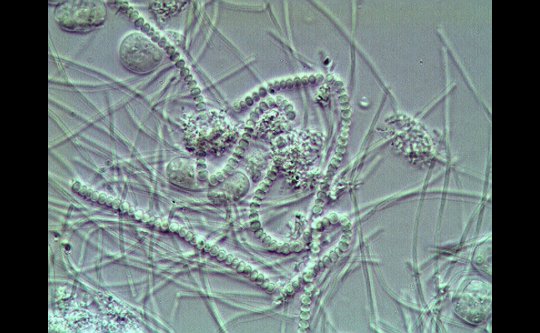 What
are Filamentous Bacteria and why are they important to my system? What
are Filamentous Bacteria and why are they important to my system?
Filamentous Bacteria are a type of bacteria that can be found in a
wastewater treatment system.
They function similar to floc forming bacteria in that they degrade BOD
quite well. In small amounts, they are quite good to a biomass. They can add
stability and a backbone to the floc structure that keeps the floc from
breaking up or shearing due to turbulence from pumps, aeration or transfer
of the water.
In large amounts they can cause many problems.
Filaments are bacteria and fungi that grow in long thread-like strands or
colonies.
I do not have filamentous bacteria at my plant! Are
you sure? Check here.
Filamentous Identification-
lab testing inquiries
They are very good BOD removers
They add a backbone or rigid support network to the floc structure
Helps the floc structure to filter out fine particulate matter that will
improve clarifier efficiency.
They help the floc to settle if in small amounts.
They reduce the amount of "pin" floc.
They can interfere with separation and compaction of activated sludge and
cause bulking when predominant.
They can affect the sludge volume index (SVI)
They can cause poor settling if dominant.
They can fill up a clarifier and make it hard to settle, causing TSS
carryover
They can increase polymer consumption
They can increase solids production and cause solids handling costs to
increase significantly

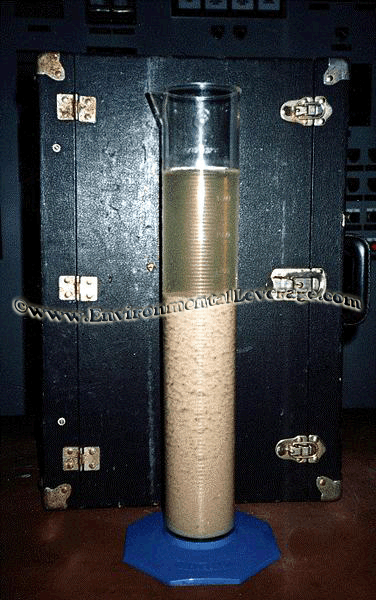
Typical SSV30 with
Filamentous Bulking
before and after Chlorination
What are some of the Major Causes of Filamentous Bacteria?
• Low Dissolved Oxygen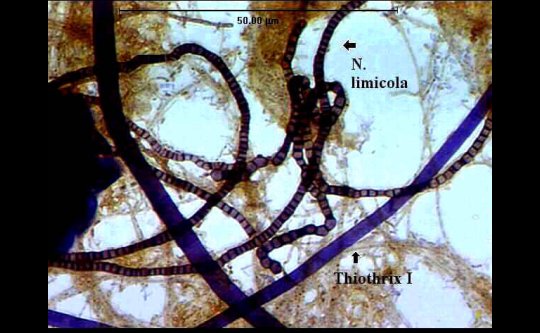
• Low F/M (High F/M)
• Low Nutrient (N or P)
• Septicity/Sulfides
• Low pH
• Grease and Oil
Filamentous Bacteria- How do I know they are there or how can I monitor
them?
• Microscopic analyses
• Gram stains and Neisser stains should be performed to differentiate
certain characteristics of the filaments in order to identify them and
determine the cause of them so corrective action can be taken.
• Settleometer - SVI
Filamentous Identification should be used as a tool to monitor the health
of the biomass when a filament problem is suspected. Filamentous
Identification is used to determine the type of filaments present so that a
cause can be found and corrections can be made to the system to alleviate
future problems. All filamentous bacteria usually have a process control
variation associated with the type of filament present that can be
implemented to change the environment present and select out for floc
forming bacteria instead.
Killing the filaments with chlorine or peroxide will temporarily remove
the filaments, but technically it is a band-aid. A process change must be
made or the filaments will return with time eventually. Find out what
filaments are present, find out the cause associated with them and make a
process change for a lasting fix to the problems.
Filaments their causes and suggested controls- click on the filament to
link to that filament's specific page for more information
Low D.O. Filaments
Control
Type 1701 Adjust the aeration rates or
S. natans
F/M( based on aeration solids)
H. hydrossis
(Long RAS lines or sludge held too long in the clarifier can sometimes
cause the
growth of low D.O. filaments even if the aeration basin has sufficient D.O.
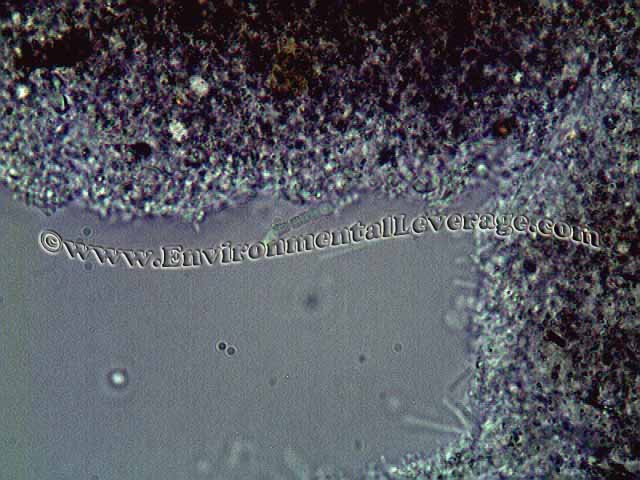 Wastes
with Limited Nutrients (N or P)
Control Wastes
with Limited Nutrients (N or P)
Control
Thiothrix,
Nutrient addition BOD ratio
Type 021N and
N. limicola III
of 100:5:1 suggested
Low F/M ratios
Control
Type 0041
Increase RAS,
Type 1851
Increase WAS
Type 0803
Type 0675
Sulfide Compounds or Septic Wastes Control
Thiothrix,
Pre aeration or pre-
Beggiatoa
chlorination, Check solids holding times, clarifers, digestors
Type 021N, Type 0914 EQ tanks, process side holding tanks, dewatering tanks
Low FM and septic conditions
Type 0092, N. limicola II,
Same control as septic wastes
Type 0581, Type
0961, Type 0411
Low pH (< 6.5)
Control
Fungal filaments Adjust the pH
High Grease and Oil
Control
Nocardia, M. parvicella and
Type 1863 Optimize
Primary clarifier, Bioaugmentation
Some filaments have more than one version of the filament species, with
slightly different characteristics for identification.
N. Limicola I
N. Limicola II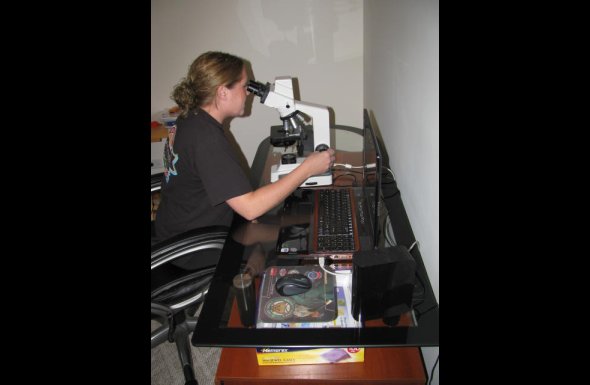
N. Limicola III
Thiothrix I
Thiothrix II
Photomicrographs of Filaments
More
Environmental Leverage Inc. can help you with a Filamentous Identification
Wastewater Biomass Lab Analysis.
Filaments can be internally or externally and they can be free of the
floc structures or found intertwined in the floc. Most labs think that
filaments need to be extending from the floc in order to be a problem. That
is not true. Internal filaments can cause more problems than external
filaments. Think of internal filaments causing a structure like a sponge. It
will retain water easily and be harder to dewater, will be hard to compress
and will take up more space, thereby increasing solids handling costs.
Filaments present in the system do not always have to mean a problem.
Some filaments are good if they form a strong backbone and add a rigid
network to the floc. They help give the floc more structure and settle
faster. Filaments are good BOD degraders also. They are only a problem when
they become dominant. If filament abundance is in the abundant or excessive
range, having a Filamentous Identification performed is recommended.
 When
Gram and Neisser stains are performed for filamentous Identification, the
types of filaments found present will be noted on the Floc Characterization
sheet to the right of the filament section and will be noted on the Cover
Sheet. A Filament Causes sheet, Filamentous Predominance sheet and
corrective actions will be given and included also with the report. A
Filamentous Worksheet will be included. Individual sheets on the actual
filaments present in the sample will be included with more information on
that particular filament. When
Gram and Neisser stains are performed for filamentous Identification, the
types of filaments found present will be noted on the Floc Characterization
sheet to the right of the filament section and will be noted on the Cover
Sheet. A Filament Causes sheet, Filamentous Predominance sheet and
corrective actions will be given and included also with the report. A
Filamentous Worksheet will be included. Individual sheets on the actual
filaments present in the sample will be included with more information on
that particular filament.
Start your way now to a cleaner, brighter effluent with fewer hassles in
your waste treatment plant.
Ok, you convinced me. How do I go about sending in a sample?
Contact Jennifer or Laurie at Environmental Leverage- 1-630-906-9791 to set
up sampling.
What will I need to send in?
Send in 150 mls of MLSS in a small, plastic bottle with at least 1-2
inches of headspace/airspace in the bottle. This will keep sample from
becoming septic in transit and remain fresh for your analysis. Seal the bottle carefully. Send overnight
by UPS, Fed ex- etc. If possible, pack with blue ice to keep refrigerated.
1 -
Wastewater Biomass Only - $250.00
2 - Wastewater Biomass Analysis as above, plus Filamentous ID - $350.00 Full
Filamentous ID Analysis
Both Analysis Includes a CD with Microscopic photographs & digital videos,
troubleshooting advice from our expert staff.
India Ink Stain- India Ink is used as a quick
and dirty test to tell one of two things.
This is an excellent quick and dirty test that can be used daily. One drop
of India ink is added to one drop of the biomass. Everything will be dark
except for the polymer generated by the biomass. A normal biomass will have
some bright areas relative to the size of the floc structures. Extremely
bright or excessive areas will indicate one of two things. A toxic shock to
the system or nutrient deficiency. If there are higher life forms present,
then a shock can instantly be ruled out and nutrient deficiency can be
verified.
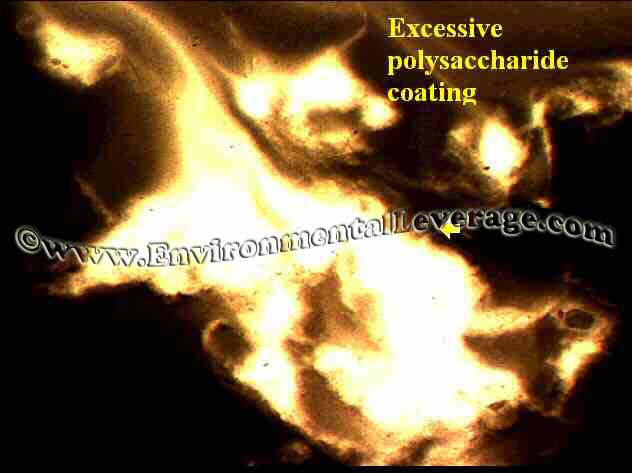
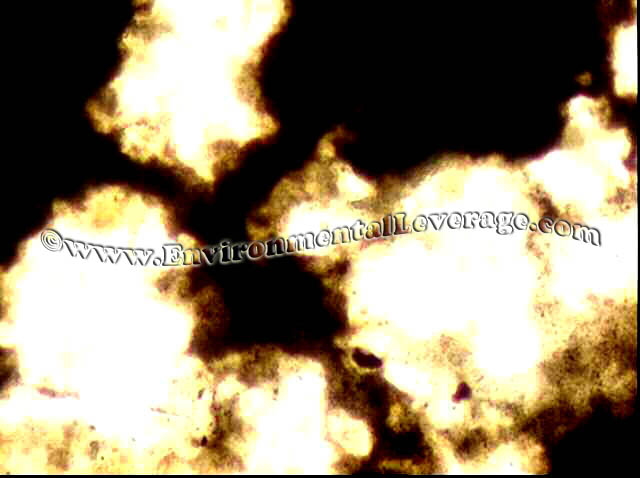
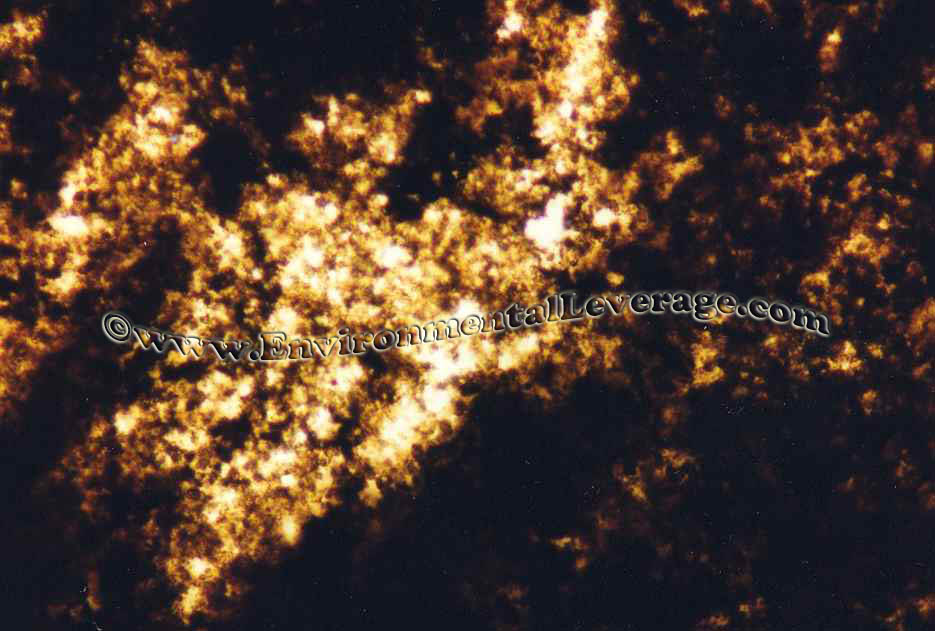
Stains, what to use
and where to find them
If you are interested in having a
Filamentous Identification of your
wastewater system performed please fill out the form for sample
submission.
How are
your bugs doing?
Click on the links below for Filamentous Identification Information
1
Contact us today
and click this link to set up a Filamentous Identification of your MLSS
and start saving money at your plant
2 Wastewater Biomass
Lab Analyses
with Filamentous Identification
3 A full set of Stained Filaments - Microscope
Slide Set Pre-Made by Environmental Leverage Inc.
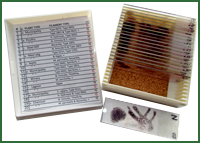
4 © Filamentous ID the
Easy Way™ - Training CD - packed full of samples from around the
world.
5
All
Wastewater Training Materials in printable Pdf form - Click this Link
6 Hands On
Wastewater Training Classes around the country - Earn CEU credits - Courses
taught by Tracy Finnegan, Principal Consultant of Environmental Leverage
Inc.
Wastewater Training Classes
Wastewater Training CD's
| 
 What
are Filamentous Bacteria and why are they important to my system?
What
are Filamentous Bacteria and why are they important to my system?


 Wastes
with Limited Nutrients (N or P)
Control
Wastes
with Limited Nutrients (N or P)
Control
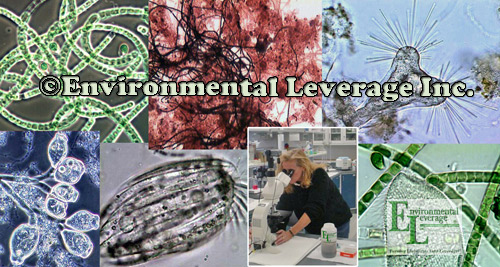
 When
Gram and Neisser stains are performed for filamentous Identification, the
types of filaments found present will be noted on the Floc Characterization
sheet to the right of the filament section and will be noted on the Cover
Sheet. A Filament Causes sheet, Filamentous Predominance sheet and
corrective actions will be given and included also with the report. A
Filamentous Worksheet will be included. Individual sheets on the actual
filaments present in the sample will be included with more information on
that particular filament.
When
Gram and Neisser stains are performed for filamentous Identification, the
types of filaments found present will be noted on the Floc Characterization
sheet to the right of the filament section and will be noted on the Cover
Sheet. A Filament Causes sheet, Filamentous Predominance sheet and
corrective actions will be given and included also with the report. A
Filamentous Worksheet will be included. Individual sheets on the actual
filaments present in the sample will be included with more information on
that particular filament. 



